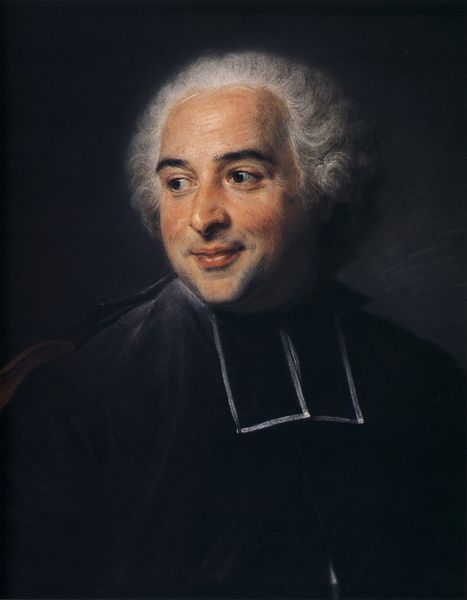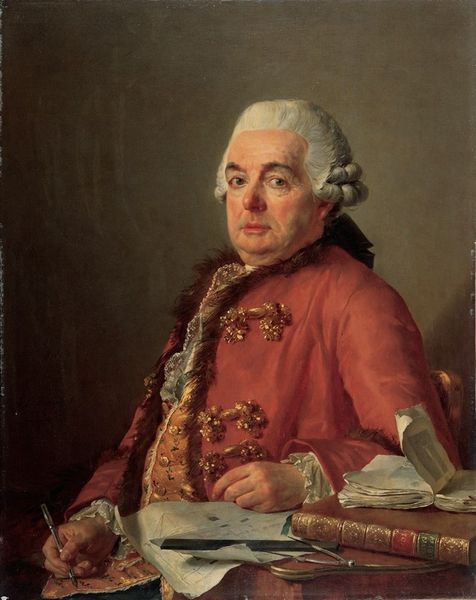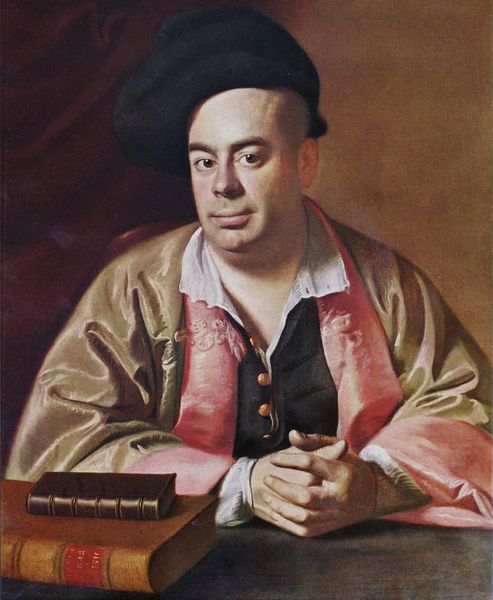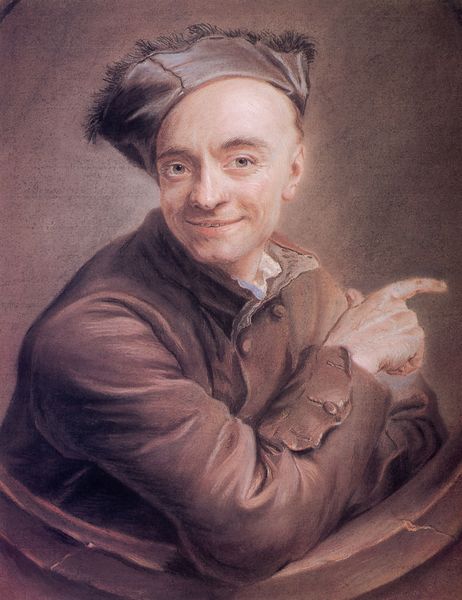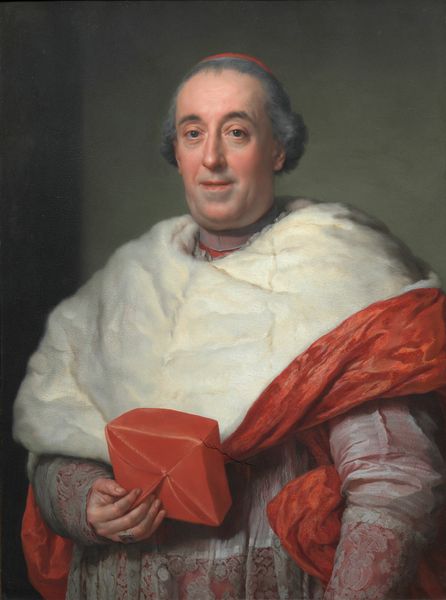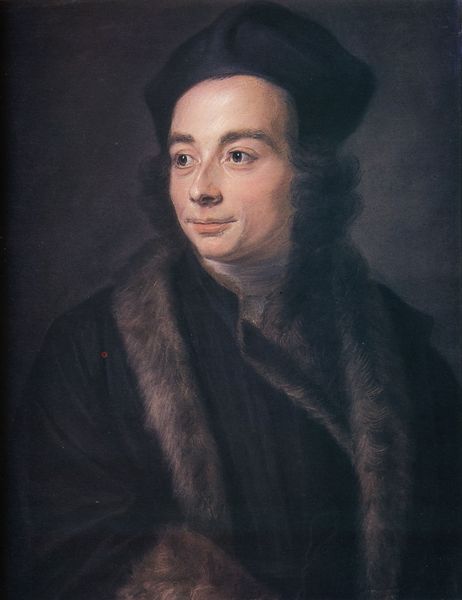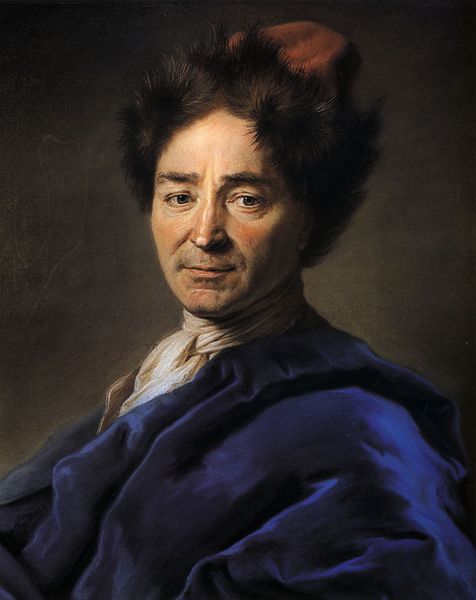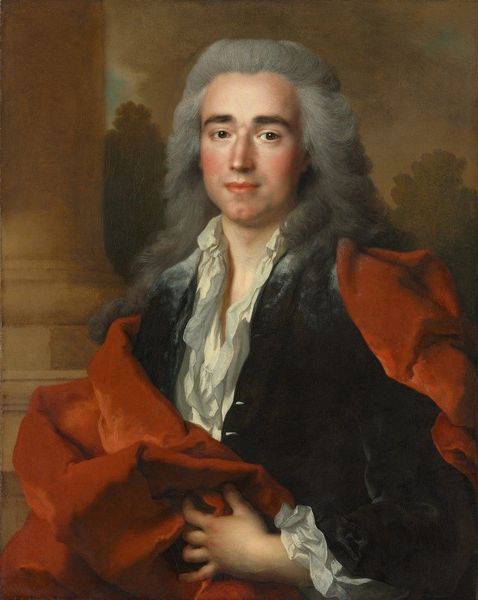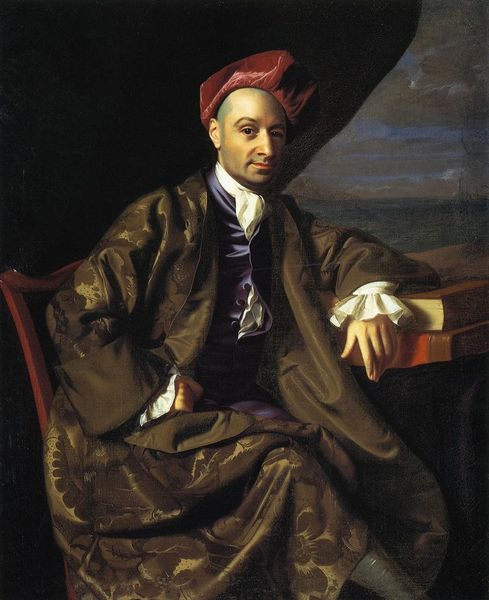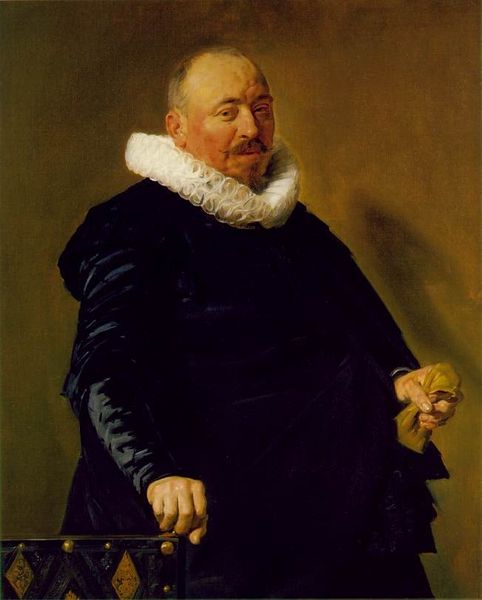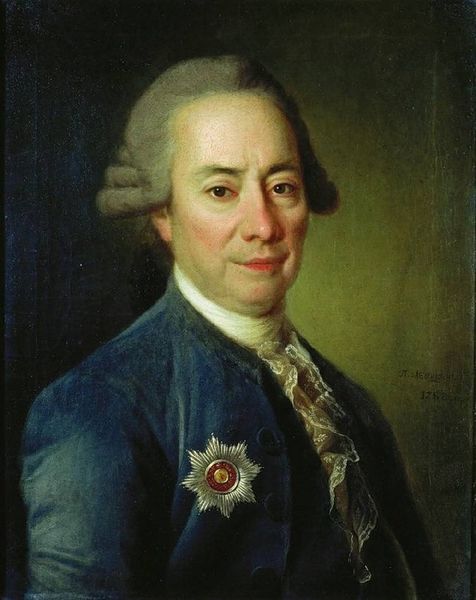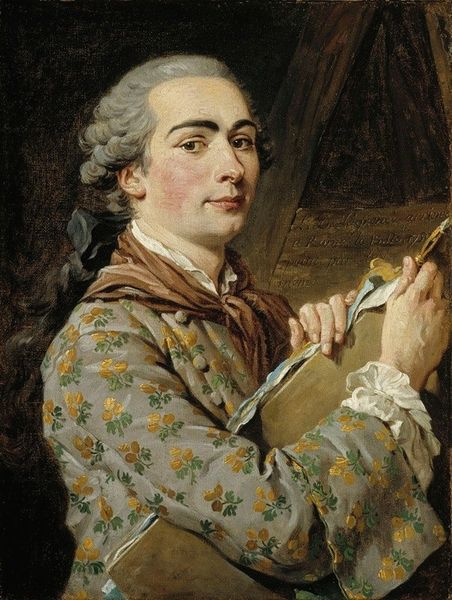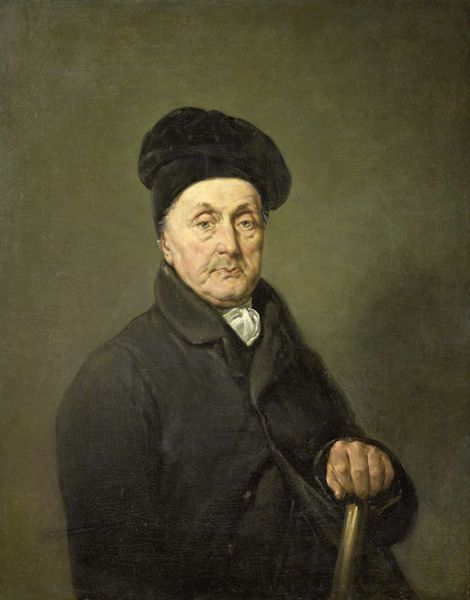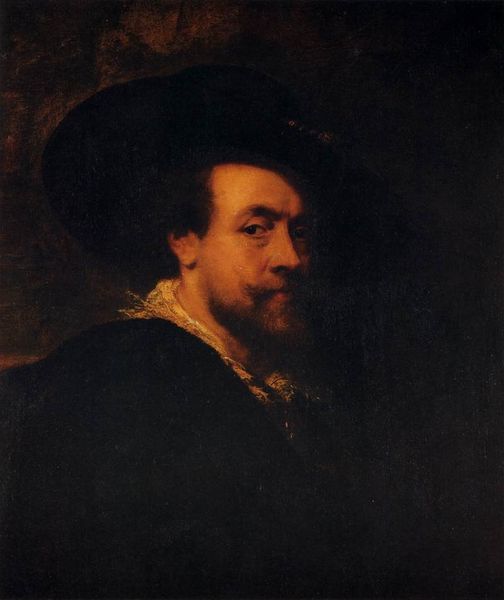
painting, oil-paint
#
portrait
#
painting
#
oil-paint
#
intimism
#
portrait art
#
rococo
Copyright: Public domain
Curator: This is an oil painting entitled "Claude Dupouch", a portrait realized by Maurice Quentin de la Tour. Editor: Immediately, I'm struck by how relaxed he looks. Almost…melancholy, but there's a certain worldliness in his gaze. And that blue fabric he's holding–it stands out vividly against the darker tones. Curator: De la Tour was known for capturing the spirit of the French Enlightenment, but unlike many of his portraits which depict aristocratic splendor, this is an intriguing image of a bourgeois gentleman. It does not immediately celebrate the usual ideals of aristocracy of the time, reflecting instead an atmosphere of growing democratic values and appreciation of everyday intellect. Editor: Yes, he seems approachable. That's where that sense of intimacy stems from, doesn't it? And that fabric... Is it symbolic? I almost read it like a security blanket or perhaps artistic inspiration being clasped. It draws your eye right to his hands. Blue traditionally stands for introspection. Curator: The gesture is intimate but perhaps deceptive. Portraiture, especially during this period, served social functions, establishing status and influence. Though informal, we should remember how such portrayals reinforced certain power structures in society, of class and artistic achievement, no less so during the rise of the middle class. Editor: That's an interesting point. However, I believe his cap is especially telling. Typically in portraits, this style of soft cap shows a commoner or artisan or otherwise an anti-aristocratic fashion. This portrait feels rebellious almost because of the choice in hat, making him more accessible despite his class. Curator: Perhaps De la Tour intentionally plays with those signifiers of class, offering a nuanced view that defies easy categorization. This makes one consider what he’s known for: The politics of imagery indeed takes on another layer in paintings like these. Editor: Yes, exactly. Considering everything you’ve said and his own melancholic state. The visual layering brings so much more nuance than I would have initially given credit. Curator: Ultimately, this work demonstrates De la Tour's skillful ability to embed political and cultural commentary within the portrait. Editor: Agreed, and perhaps too, the artist used subtle visual language to connect us to a universal humanism present even then.
Comments
No comments
Be the first to comment and join the conversation on the ultimate creative platform.
